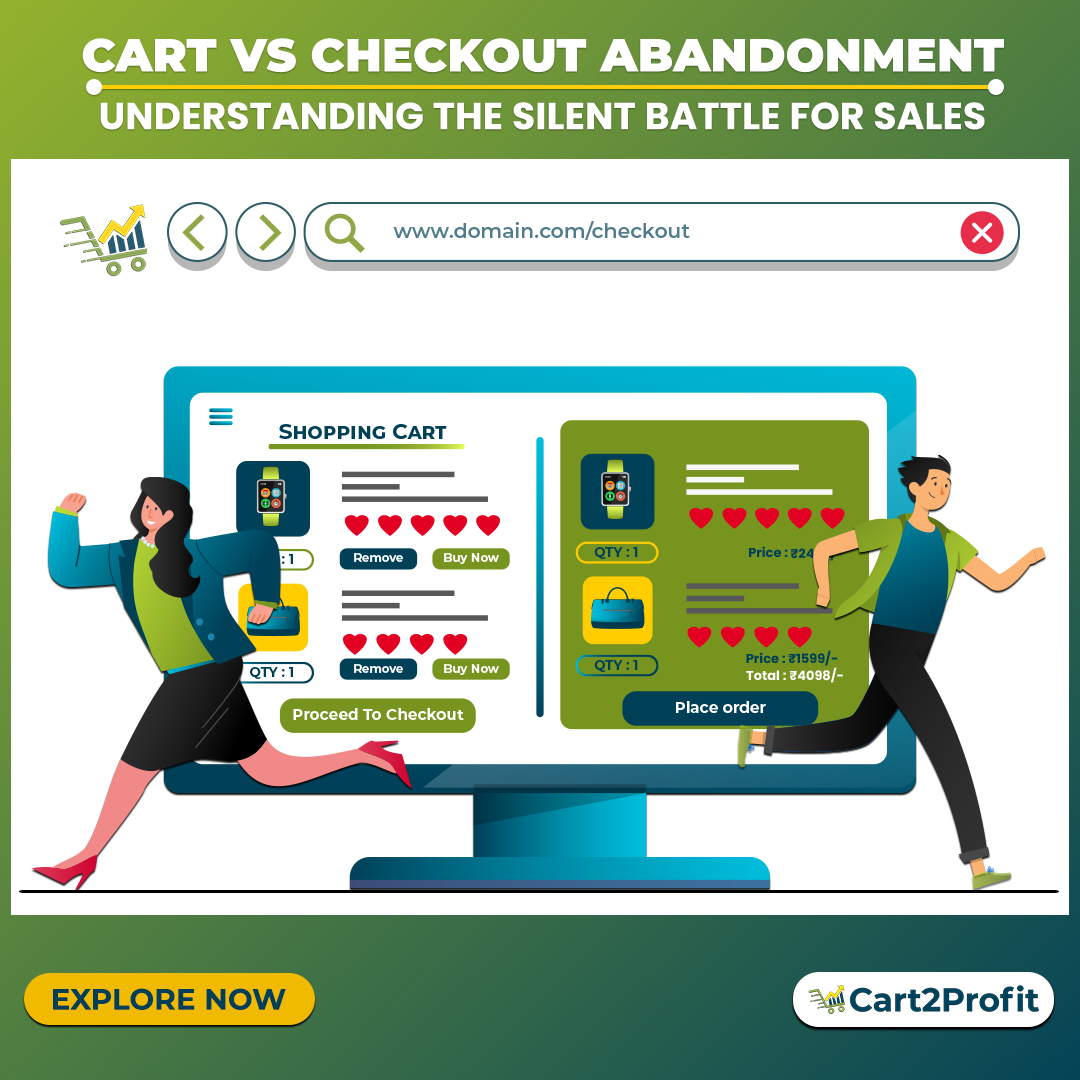
Cart abandonment and checkout abandonment are two key concepts in the world of e-commerce that have a direct effect on a company’s bottom line. Both instances involve clients abandoning the buying process before finishing the deal, although they take place at various points throughout the purchasing process.
Surrendering the journey too early, cart abandonment refers to when customers add items to their shopping carts but leave the website before making a purchase.Usually, this happens before the consumer reaches the checkout page. Cart abandonment can happen due to a number of reasons, like diversion, comparative shopping, unexpected costs, or a change of heart. It is important to note that cart abandonment occurs often in the e-commerce sector, with typical percentages ranging from 60% to 80% across various industries.
Leaving before the final contrary, checkout abandonment. This happens when customers encounter issues, complaints or difficulties in the last phases of the purchase. Checkout abandonment might be brought on by issues like complex forms, lengthy loading periods, security worries, or unexpected taxes. The checkout abandonment rate primarily measures the amount of consumers who leave at the last step, whereas the cart abandonment rate focuses on the complete process.
Both Cart and Checkout Abandonment have a big impact on e-commerce businesses:
Lost opportunities: Missed sales and possible income loss are consequences of both forms of abandonment. Missed possibilities for conversion and revenue creation are depicted by customers who depart with their shopping carts empty or while checking out.
Conversion Rates Affect: High cart abandonment rates show that buyers are interested in the things they are buying, but decide not to finish the transaction. Because of how this impacts conversion rates usually, it is critical for organizations to address the underlying problems.
Businesses may use a variety of tactics to lower cart and checkout abandonment rates, including :-
“Addressing cart and checkout abandonment is an ongoing process that requires continuous improvement and optimization of the customer experience.” – John Smith, E-commerce Expert
3. Provide Guest Checkout: Give customers the chance to finish their transactions without creating an account by offering guest checkout. As a result, friction is decreased and a frequent cause of abandonment is eliminated.
4. Improving Mobile Experience: In view of the growing popularity of mobile shopping, make sure that your website and checkout procedure are responsive. For tablets and smartphones, mobile optimization can assist prevention of checkout abandonment.
5. Utilize Retargeting and Remarketing: Use retargeting efforts to re-engage consumers who have left the checkout process or abandoned their carts. Customers with abandoned carts can be reminded about them, and persuaded to finish the transaction through retargeting advertising and tailored emails.
It is critical for e-commerce enterprises to fathom the differences between cart abandonment and checkout abandonment. Businesses can increase their conversion rates, reduce abandonment rates, and boost overall sales and income by knowing the root causes of each form of abandonment and putting in place constructive measures to address them. Always keep in mind that decreasing cart and checkout abandonment needs for an inclusive strategy that focuses on offering a seamless, safe, and user-friendly experience across the whole purchasing journey.

 Inbound Call CenterMay 25, 2024Role of Inbound Call Centers in Customer Satisfaction
Inbound Call CenterMay 25, 2024Role of Inbound Call Centers in Customer Satisfaction Cart Abandonment SolutionAugust 22, 2023D2C Cart Abandonment Solutions for Automotive Industry
Cart Abandonment SolutionAugust 22, 2023D2C Cart Abandonment Solutions for Automotive Industry Cart Abandonment SolutionAugust 22, 2023D2C Cart Abandonment Solutions for Personal Care and Hygiene
Cart Abandonment SolutionAugust 22, 2023D2C Cart Abandonment Solutions for Personal Care and Hygiene Cart Abandonment SolutionAugust 21, 2023D2C Cart Abandonment Solutions for Health and Wellness
Cart Abandonment SolutionAugust 21, 2023D2C Cart Abandonment Solutions for Health and WellnessAuthor Profile Varuna Raghav As a CX and marketing specialist, Varuna Raghav has more than 15+ years of experience to […]
Read more
is the apt framework developed for deploying the right mix of People, Process & Technology in a business with a clear eye on increasing lead conversion, reducing customer acquisition & management cost, and winning customers for life.